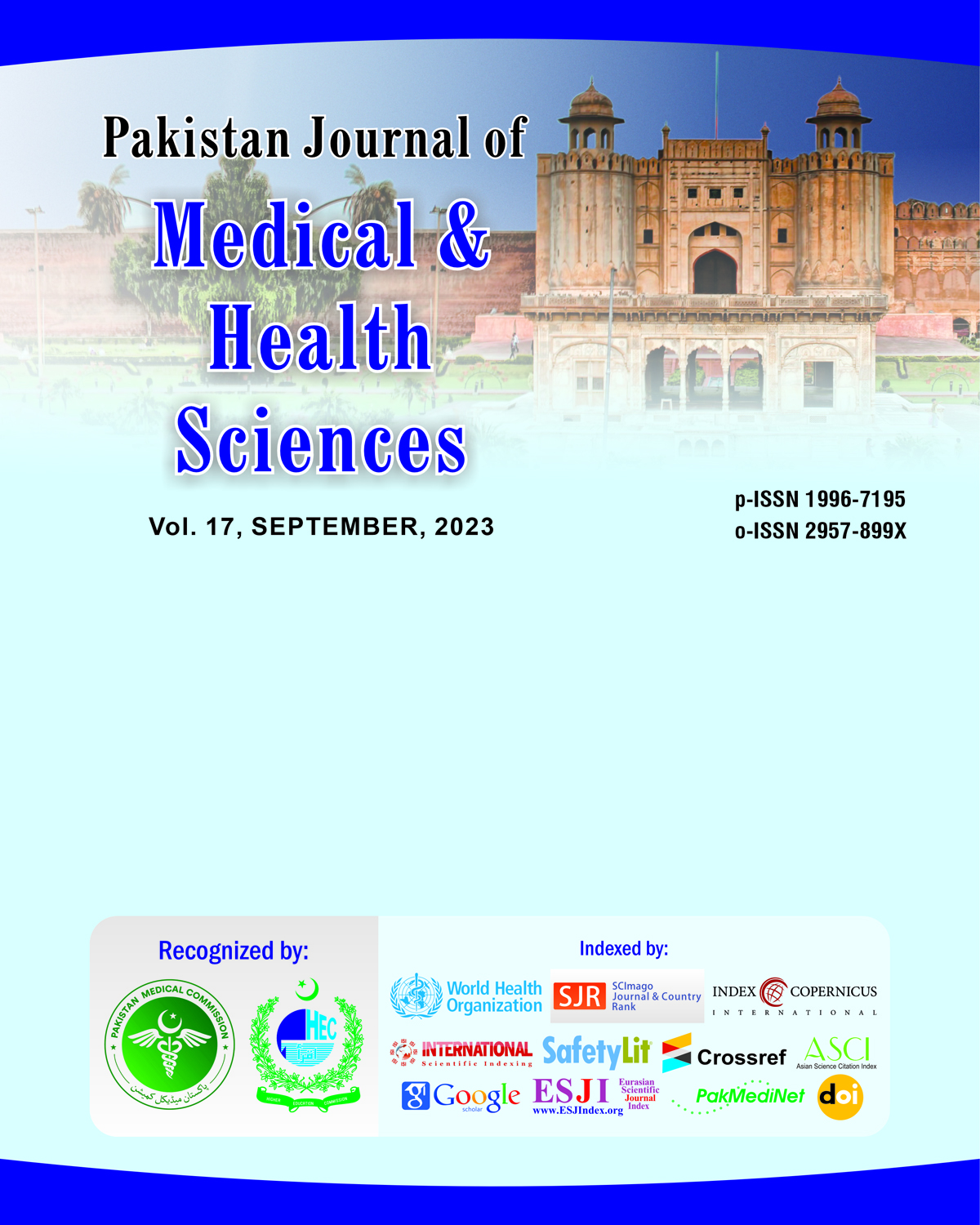The Anatomical Basis of Muscle Tone in the Pakistani Population, Causes, Mechanisms, and Functional Significance
DOI:
https://doi.org/10.53350/pjmhs2023170976Abstract
Background: Muscle tone, which is the continuous passive contraction of muscles, is necessary for maintaining a correct posture, joint stability, and coordinated movement. Muscle tone is determined by anatomical structures and neural input, however underlying determinants of muscle tone in the Pakistani population are underexplored.
Methodology: This 12-month cross-sectional study was conducted in Khawaja Muhammad Safdar Medical College Sialkot and Nawaz Sharif Medical College, Gujrat from June 2022 to June 2023 and evaluated 60 healthy Pakistani adults aged 20–45 years, 35 males and 25 females. High-resolution ultrasound and MRI were used to assess muscle architecture, specifically muscle CSA and pennation angle in the quadriceps and biceps brachii. Surface electromyography (sEMG) was used to record resting muscle activity using electrophysiological assessments. Blood samples were collected to measure biochemical markers (creatinine kinase (CK), lactate dehydrogenase (LDH), and inflammatory cytokines (IL-6, TNF-α)) from venous blood. Pearson’s correlation coefficient and independent t-tests were used to analyse the data.
Results: CSA and pennation angles for the quadriceps were significantly higher than those for the biceps brachii, and there were strong positive correlations between CSA and resting sEMG amplitude (r = 0.45, p = 0.002) and between pennation angle and sEMG amplitude (r = 0.35, p = 0.01). There were no significant differences between genders about demographic and biochemical parameters, and no correlation with biochemical markers was found with muscle tone.
Conclusion: It was shown that anatomical features, especially muscle CSA and pennation angle, are important determinants of resting muscle tone in the Pakistani population. Targeted interventions to improve musculoskeletal health can be based on these findings. Further investigation of these relationships can be done in the future.
Keywords: Muscle tone, Pakistani population, muscle architecture, sEMG, ultrasound, MRI, anatomical determinants, neuromuscular function.
Downloads
How to Cite
Issue
Section
License
Copyright (c) 2023 Wajeeha Ansar, Aneela Ahsan, Kanwal Sarwar, Irum Naz, Muhammad Faisal Khan, Muhammad Umar

This work is licensed under a Creative Commons Attribution 4.0 International License.


